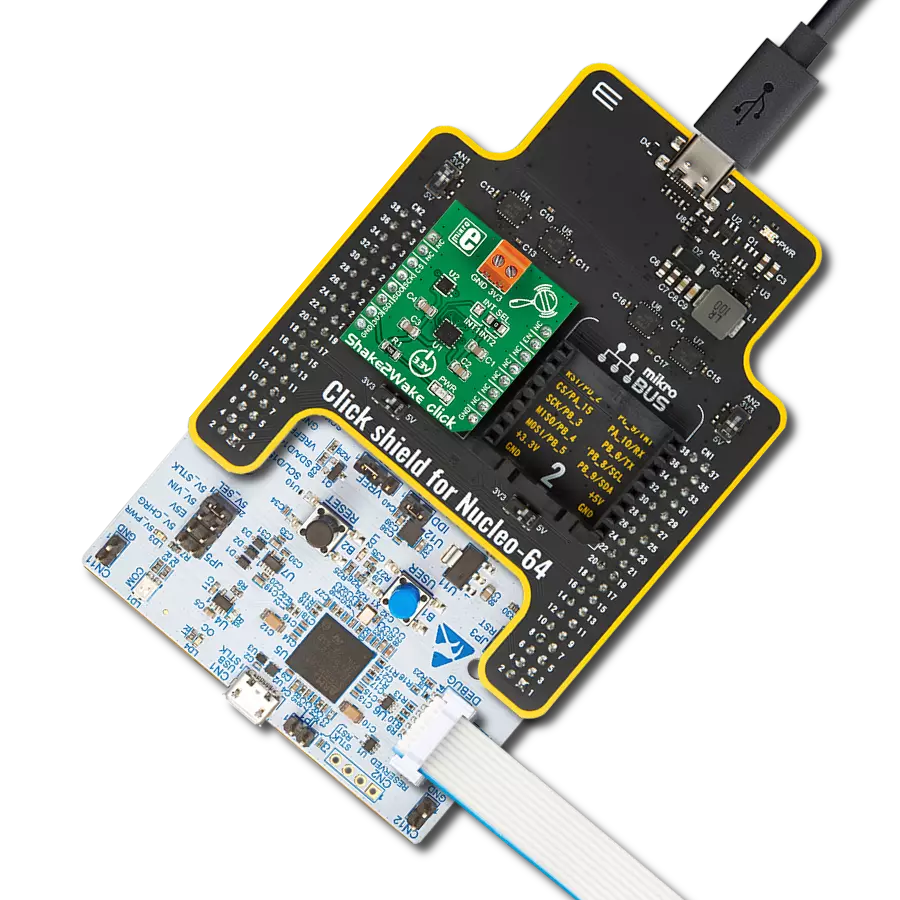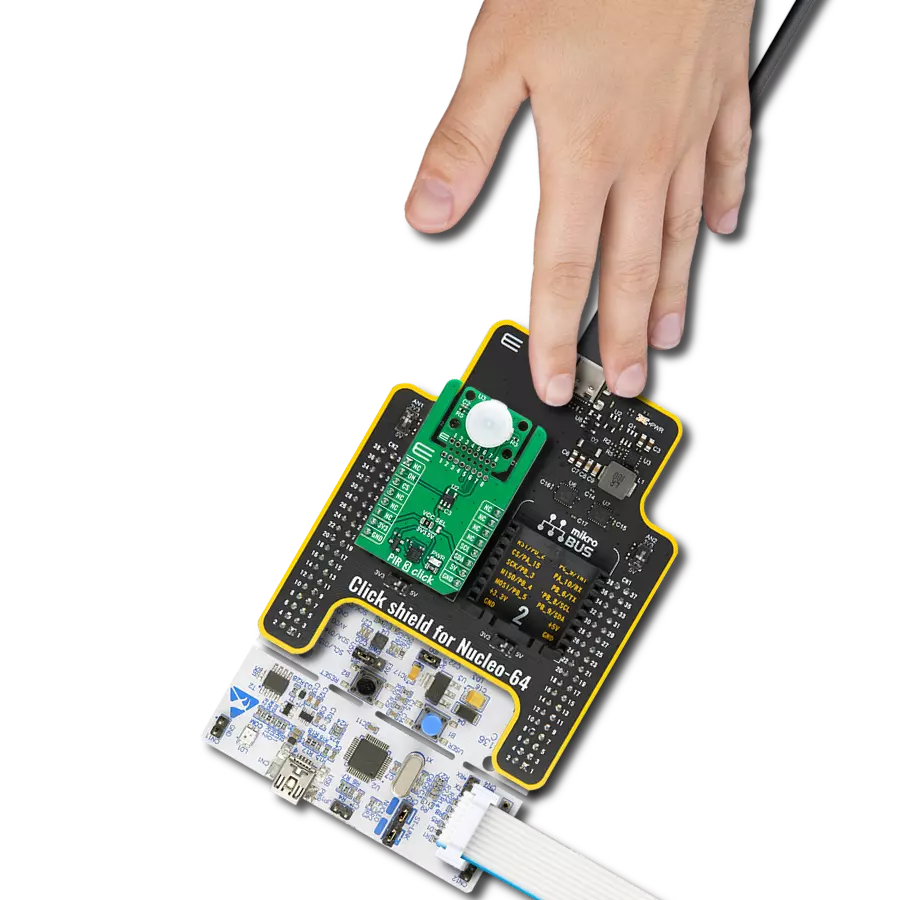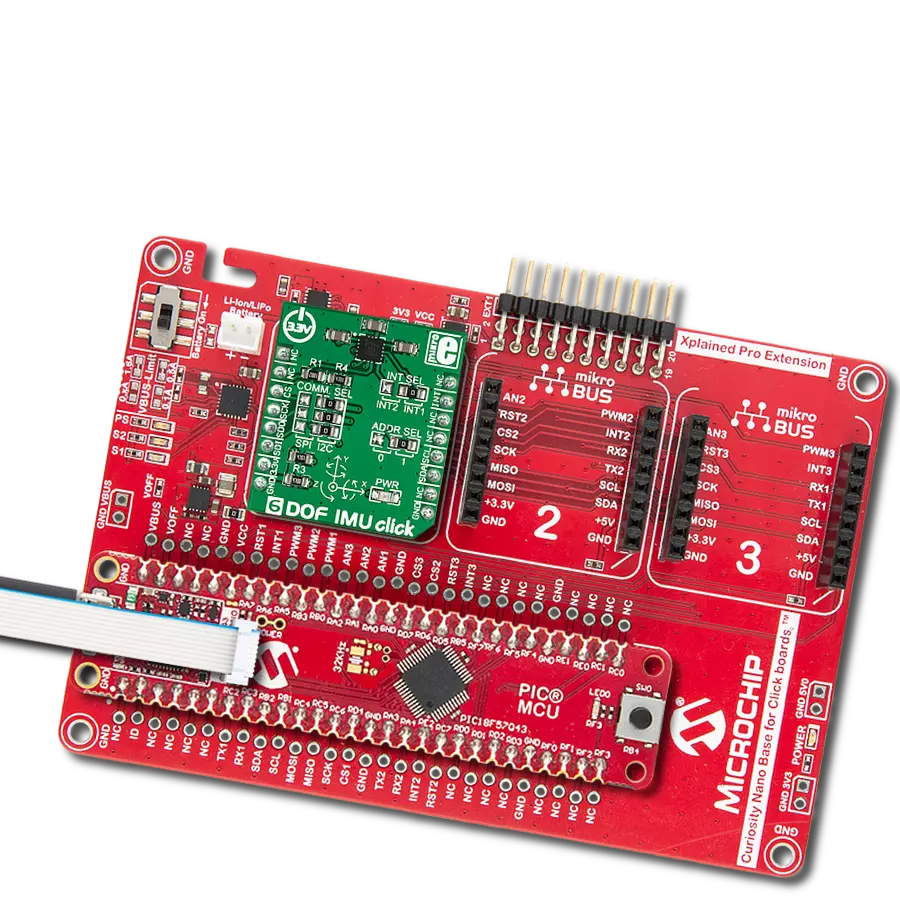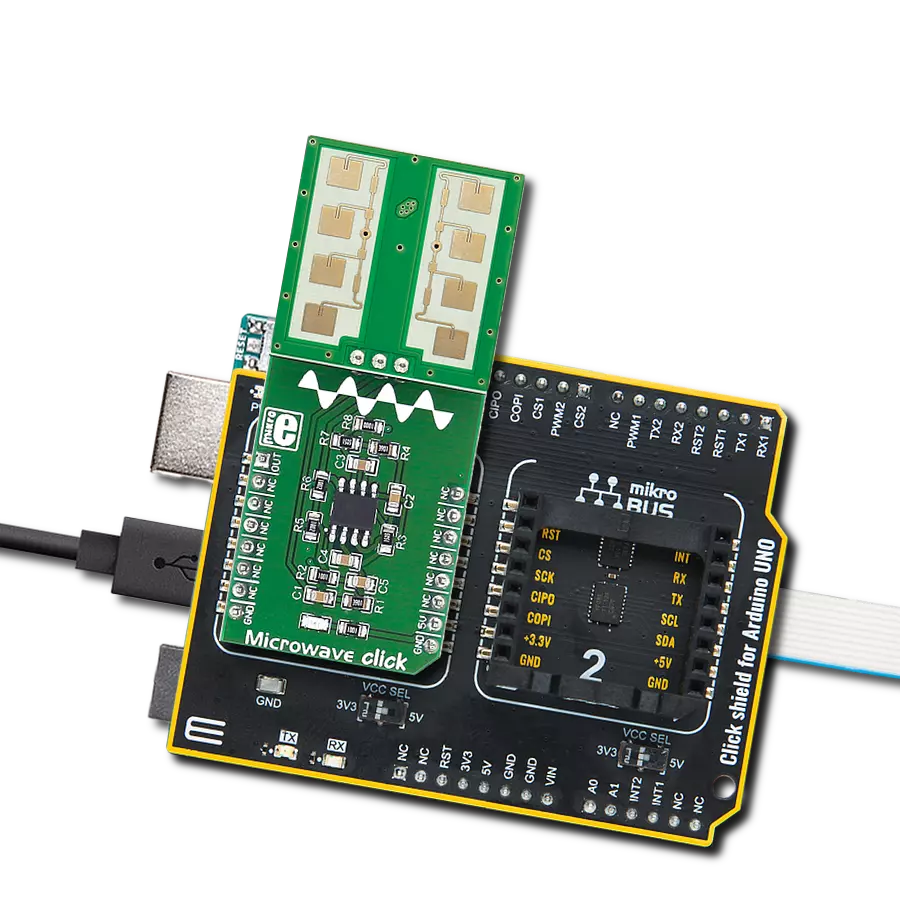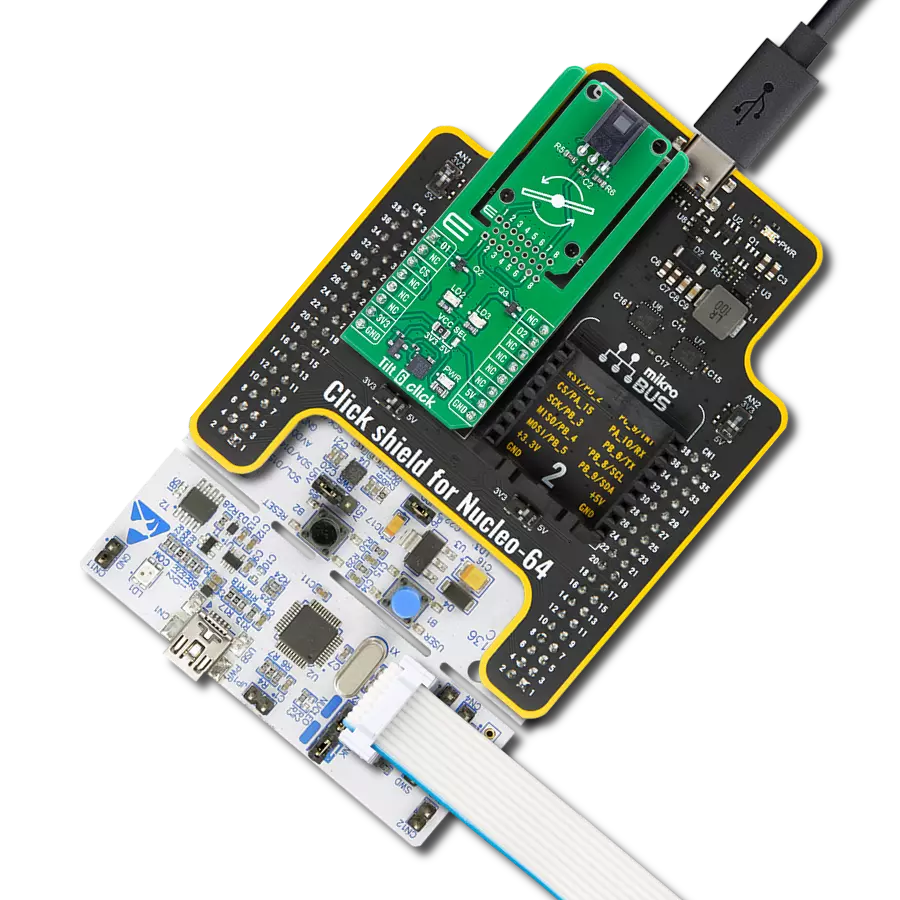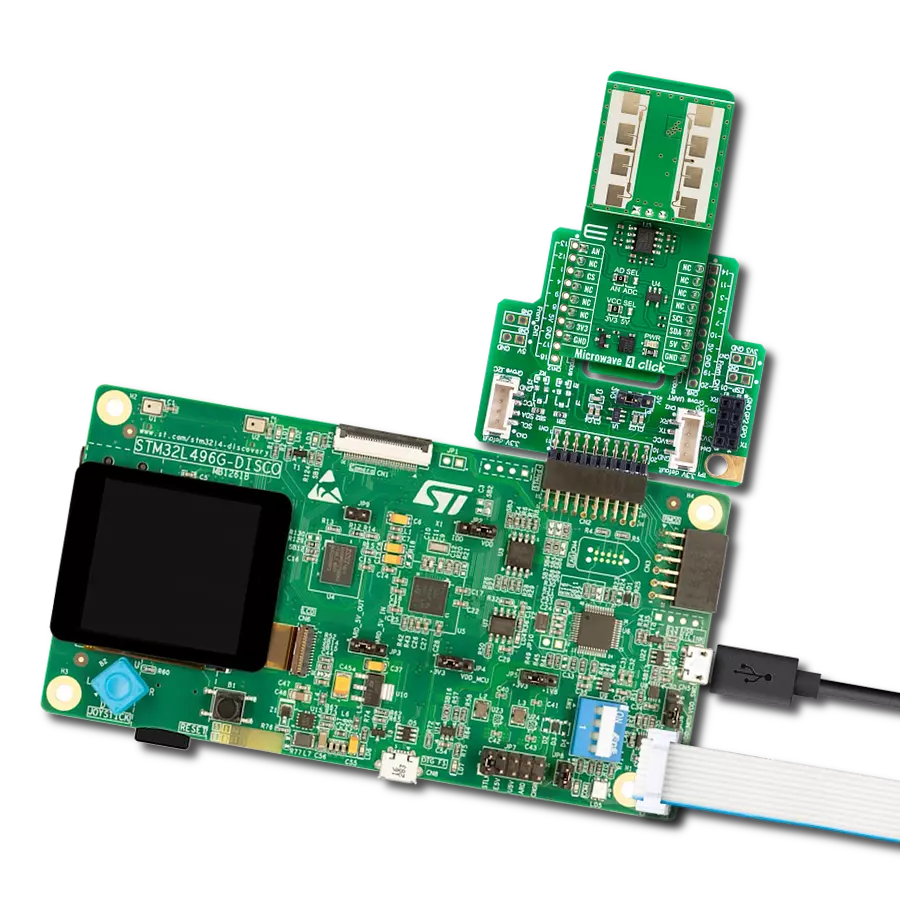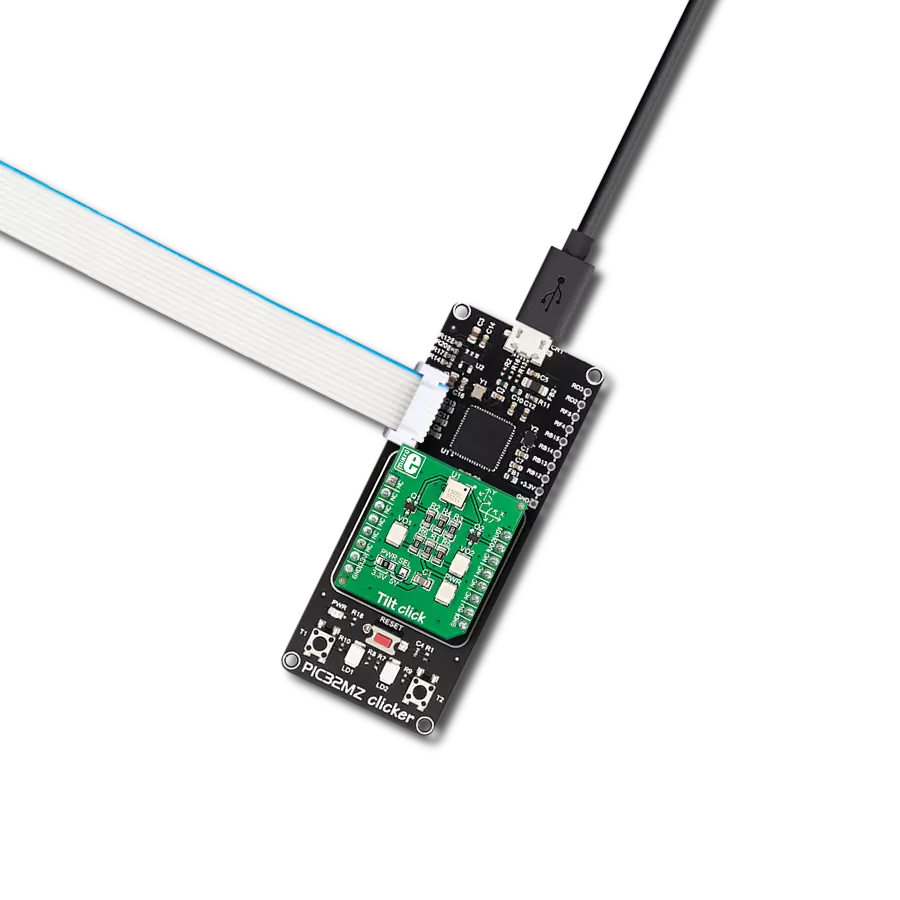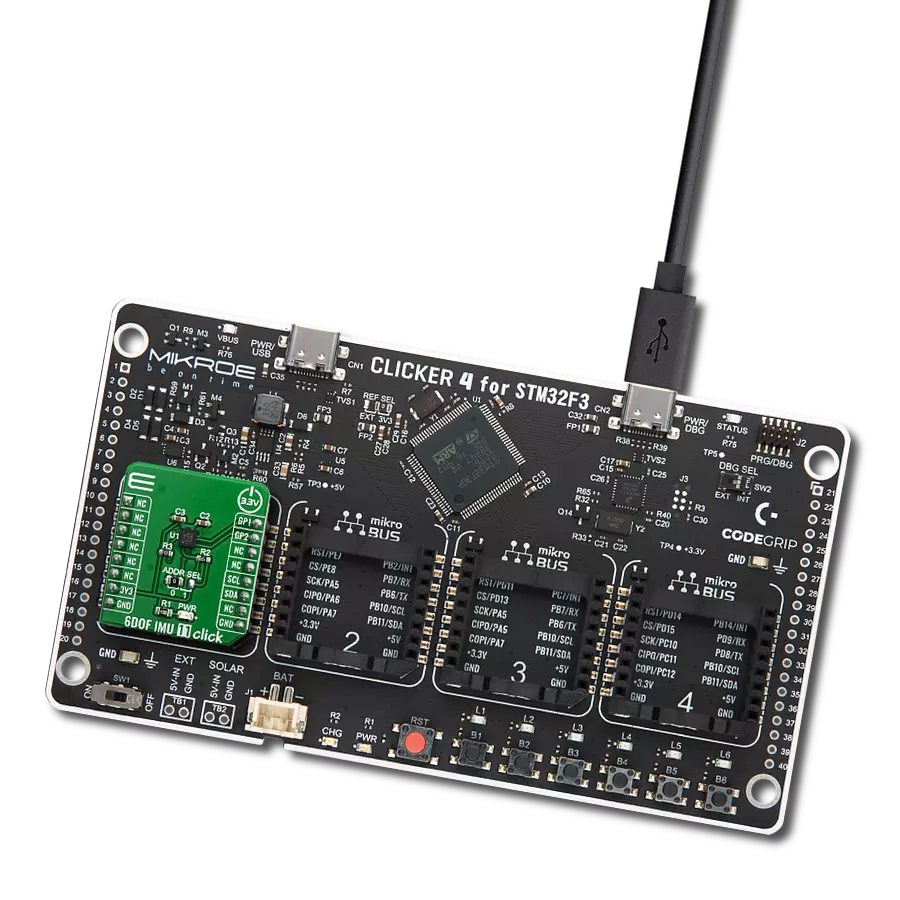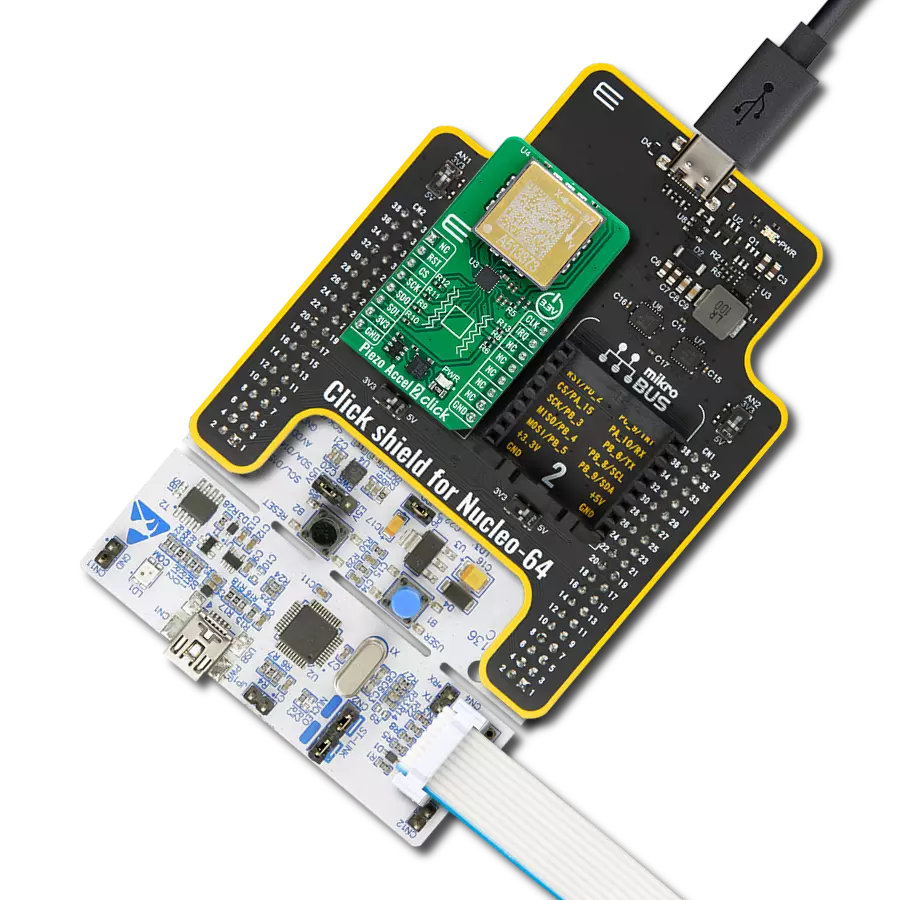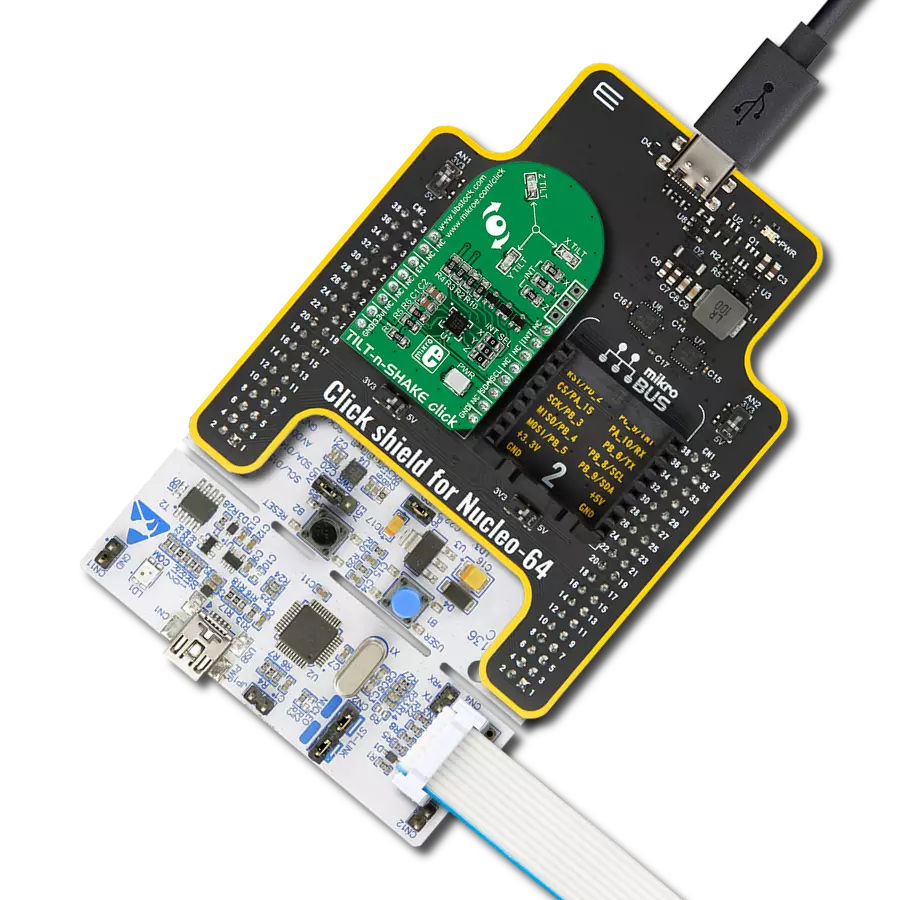Revolutionize your solution by incorporating precise movement and rotation detection
A
A
Hardware Overview
How does it work?
MPU 9DOF Click is based on the MPU-9250, a 9-axis MotionTracking device combining a 3-axis gyroscope, accelerometer, magnetometer, and a Digital Motion Processor™ (DMP) from InvenSense. The MPU-9250 features three 16-bit ADCs for digitizing each part (gyroscope, accelerometer, and magnetometer) outputs, low power, and high performance. For precision tracking of both fast and slow motions, the MPU-9250 features a user-programmable full-scale gyroscope range of ±250, ±500, ±1000, and ±2000dps, and an accelerometer range of ±2g, ±4g, ±8g, and ±16g, and a magnetometer range of ±4800μT. The embedded DMP engine supports advanced MotionProcessing and low-power
functions, such as gesture recognition using programmable interrupts, alongside pedometer functionality allowing the host MCU to sleep while the DMP maintains the step count. The DMP acquires data from accelerometers, gyroscopes, and magnetometers and processes the data, which can be read from the DMP's registers or can be buffered in a 512-byte FIFO. In addition to all the above features, the DMP can generate an interrupt, routed to the INT pin of the mikroBUS™ socket, which can wake up the host MCU from Suspend mode. MPU 9DOF Click allows the use of both I2C and SPI interfaces with a maximum frequency of 400kHz for I2C and 1MHz for SPI communication. The selection can be made by
positioning SMD jumpers labeled SPI I2C in an appropriate position. Note that all the jumpers' positions must be on the same side, or the Click board™ may become unresponsive. While the I2C interface is selected, the MPU-9250 allows choosing the least significant bit (LSB) of its I2C slave address using the SMD jumper labeled ADDR SEL. This Click board™ can be operated only with a 3.3V logic voltage level. The board must perform appropriate logic voltage level conversion before using MCUs with different logic levels. However, the Click board™ comes equipped with a library containing functions and an example code that can be used as a reference for further development.
Features overview
Development board
Flip&Click PIC32MZ is a compact development board designed as a complete solution that brings the flexibility of add-on Click boards™ to your favorite microcontroller, making it a perfect starter kit for implementing your ideas. It comes with an onboard 32-bit PIC32MZ microcontroller, the PIC32MZ2048EFH100 from Microchip, four mikroBUS™ sockets for Click board™ connectivity, two USB connectors, LED indicators, buttons, debugger/programmer connectors, and two headers compatible with Arduino-UNO pinout. Thanks to innovative manufacturing technology,
it allows you to build gadgets with unique functionalities and features quickly. Each part of the Flip&Click PIC32MZ development kit contains the components necessary for the most efficient operation of the same board. In addition, there is the possibility of choosing the Flip&Click PIC32MZ programming method, using the chipKIT bootloader (Arduino-style development environment) or our USB HID bootloader using mikroC, mikroBasic, and mikroPascal for PIC32. This kit includes a clean and regulated power supply block through the USB Type-C (USB-C) connector. All communication
methods that mikroBUS™ itself supports are on this board, including the well-established mikroBUS™ socket, user-configurable buttons, and LED indicators. Flip&Click PIC32MZ development kit allows you to create a new application in minutes. Natively supported by Mikroe software tools, it covers many aspects of prototyping thanks to a considerable number of different Click boards™ (over a thousand boards), the number of which is growing every day.
Microcontroller Overview
MCU Card / MCU
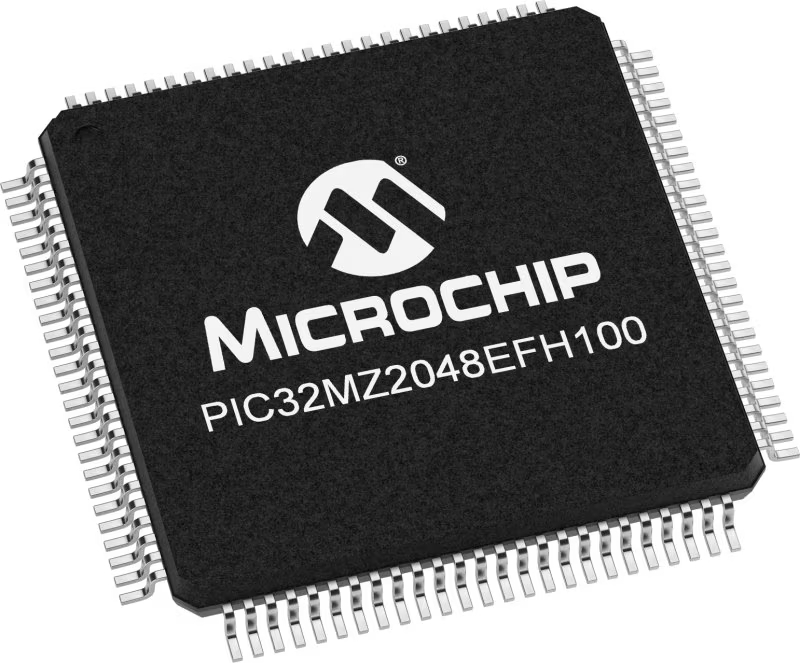
Architecture
PIC32
MCU Memory (KB)
2048
Silicon Vendor
Microchip
Pin count
100
RAM (Bytes)
524288
Used MCU Pins
mikroBUS™ mapper
Take a closer look
Click board™ Schematic

Step by step
Project assembly
Track your results in real time
Application Output
1. Application Output - In Debug mode, the 'Application Output' window enables real-time data monitoring, offering direct insight into execution results. Ensure proper data display by configuring the environment correctly using the provided tutorial.

2. UART Terminal - Use the UART Terminal to monitor data transmission via a USB to UART converter, allowing direct communication between the Click board™ and your development system. Configure the baud rate and other serial settings according to your project's requirements to ensure proper functionality. For step-by-step setup instructions, refer to the provided tutorial.

3. Plot Output - The Plot feature offers a powerful way to visualize real-time sensor data, enabling trend analysis, debugging, and comparison of multiple data points. To set it up correctly, follow the provided tutorial, which includes a step-by-step example of using the Plot feature to display Click board™ readings. To use the Plot feature in your code, use the function: plot(*insert_graph_name*, variable_name);. This is a general format, and it is up to the user to replace 'insert_graph_name' with the actual graph name and 'variable_name' with the parameter to be displayed.

Software Support
Library Description
This library contains API for MPU 9DOF Click driver.
Key functions:
mpu9dof_read_accel- Function read Accel X-axis, Y-axis and Z-axismpu9dof_read_gyro- Function read Gyro X-axis, Y-axis and Z-axismpu9dof_read_mag- Function read Magnetometar X-axis, Y-axis and Z-axis
Open Source
Code example
The complete application code and a ready-to-use project are available through the NECTO Studio Package Manager for direct installation in the NECTO Studio. The application code can also be found on the MIKROE GitHub account.
/*!
* \file
* \brief Mpu9Dof Click example
*
* # Description
* MPU 9DOF Click carries the world’s first 9-axis Motion Tracking device. It comprises two chips: one that contains
* a 3-axis accelerometer, a 3-axis gyroscope, and a DMP (digital motion processor);
* the other is a 3-axis digital compass.
*
* The demo application is composed of two sections :
*
* ## Application Init
* Initialization driver enable's - I2C, initialize MPU-9150 XL G & MPU-9150 MAG and start write log.
*
* ## Application Task
* This is a example which demonstrates the use of MPU 9DOF Click board.
* Measured accel, gyro and magnetometar coordinates values ( X, Y, Z )
* and temperature value in degrees celsius [ �C ] are being sent to the uart where you can track their changes.
* All data logs on usb uart for aproximetly every 1 sec.
*
* \author MikroE Team
*
*/
// ------------------------------------------------------------------- INCLUDES
#include "board.h"
#include "log.h"
#include "mpu9dof.h"
// ------------------------------------------------------------------ VARIABLES
static mpu9dof_t mpu9dof;
static log_t logger;
static int16_t accel_x;
static int16_t accel_y;
static int16_t accel_z;
static int16_t gyro_x;
static int16_t gyro_y;
static int16_t gyro_z;
static int16_t mag_x;
static int16_t mag_y;
static int16_t mag_z;
static float temperature;
// ------------------------------------------------------ APPLICATION FUNCTIONS
void application_init ( void )
{
log_cfg_t log_cfg;
mpu9dof_cfg_t cfg;
/**
* Logger initialization.
* Default baud rate: 115200
* Default log level: LOG_LEVEL_DEBUG
* @note If USB_UART_RX and USB_UART_TX
* are defined as HAL_PIN_NC, you will
* need to define them manually for log to work.
* See @b LOG_MAP_USB_UART macro definition for detailed explanation.
*/
LOG_MAP_USB_UART( log_cfg );
log_init( &logger, &log_cfg );
log_info( &logger, "---- Application Init ----" );
// Click initialization.
mpu9dof_cfg_setup( &cfg );
MPU9DOF_MAP_MIKROBUS( cfg, MIKROBUS_1 );
mpu9dof_init( &mpu9dof, &cfg );
Delay_10ms( );
mpu9dof_default_cfg ( &mpu9dof );
}
void application_task ( void )
{
mpu9dof_read_accel( &mpu9dof, &accel_x, &accel_y, &accel_z );
Delay_10ms( );
mpu9dof_read_gyro( &mpu9dof, &gyro_x, &gyro_y, &gyro_z );
Delay_10ms( );
temperature = mpu9dof_read_temperature( &mpu9dof );
Delay_10ms( );
mpu9dof_read_mag( &mpu9dof, &mag_x, &mag_y, &mag_z );
Delay_10ms( );
log_printf( &logger, " Accel X : %d | Gyro X : %d | Mag X : %d \r\n", accel_x, gyro_x, mag_x );
log_printf( &logger, " Accel Y : %d | Gyro Y : %d | Mag Y : %d \r\n", accel_y, gyro_y, mag_y );
log_printf( &logger, " Accel Z : %d | Gyro Z : %d | Mag Z : %d \r\n", accel_z, gyro_z, mag_z );
Delay_10ms( );
log_printf( &logger, "- - - - - - - - - - - - - - - - - - - - - - - - - - - - - -\r\n" );
Delay_10ms( );
log_printf( &logger, "Temperature: %.2f C\r\n", temperature );
Delay_100ms( );
log_printf( &logger, "- - - - - - - - - - - - - - - - - - - - - - - - - - - - - -\r\n" );
log_printf( &logger, "\r\n");
Delay_ms ( 1000 );
}
int main ( void )
{
/* Do not remove this line or clock might not be set correctly. */
#ifdef PREINIT_SUPPORTED
preinit();
#endif
application_init( );
for ( ; ; )
{
application_task( );
}
return 0;
}
// ------------------------------------------------------------------------ END
Additional Support
Resources
Category:Motion

















